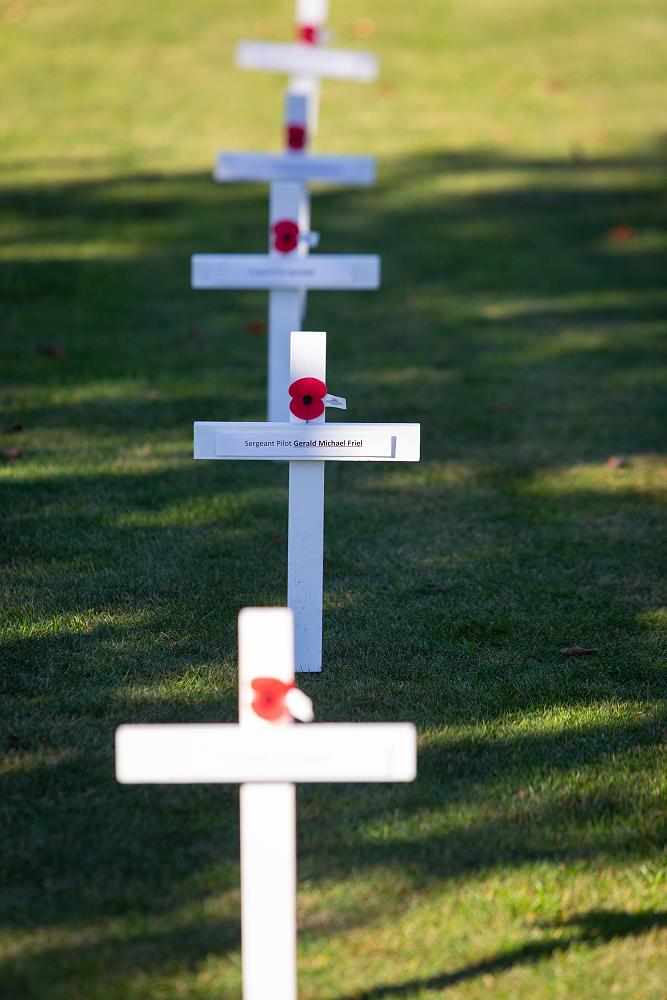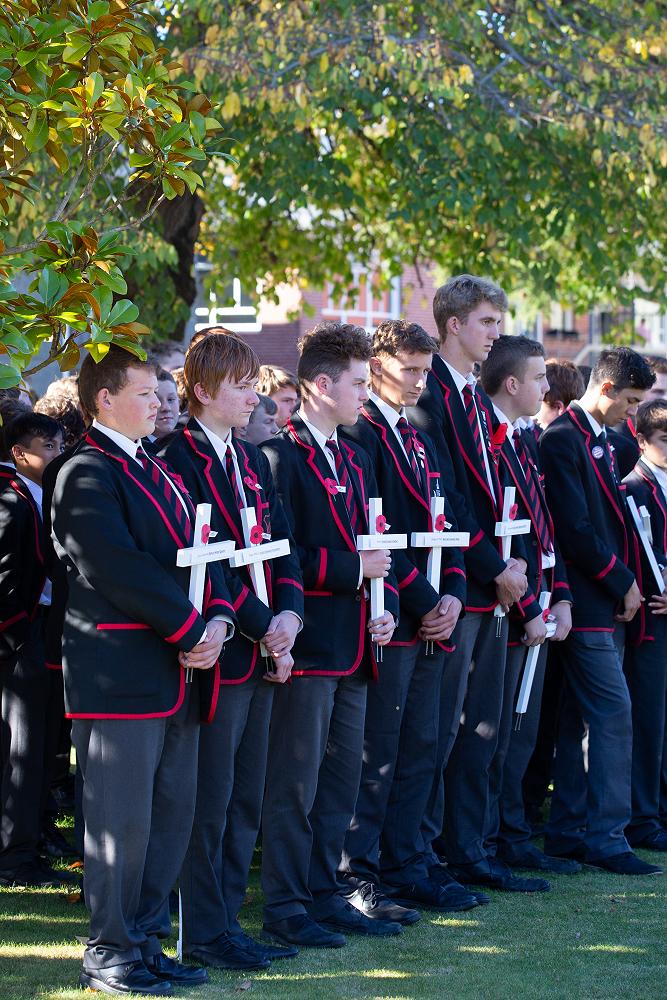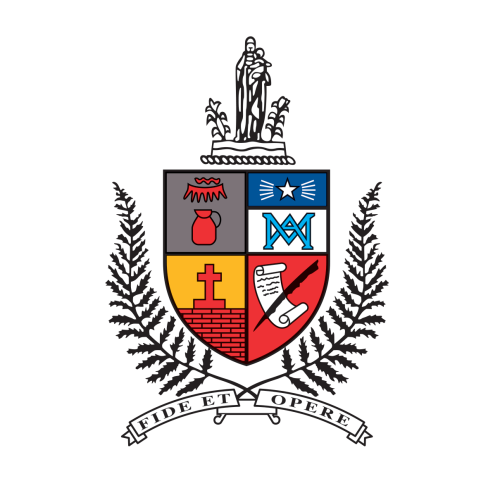
From the Rector
Greetings from St Bede’s College.
Since the last newsletter over 20 international boarding students have returned to the site, and along with a skeleton staff have resumed their online learning in their respective bubbles. A small number of junior day boys under the guidance of Mr Davidson have resumed their online learning onsite as well. Both these developments are signs we are moving slowly back to normality. The news in the last day or so that there have been no new cases of the virus in the South Island, no doubt buoy the spirits even further.
Last Friday Mr McDowall surveyed the community to get a gauge of how our online learning is going, and in turn responded this week. We appreciate the feedback because we are learning too, and will endeavour to adjust and improve to the feedback we are receiving from staff, students and parents.
There are a couple of issues that we cannot change. One is the issue with Microsoft based products, which is a global one. Microsoft are making progress in fixing this. The second is the issue of faculties working from different platforms. In a physical school setting, students can negotiate the use of multiple platforms with the support at hand. When this is removed parents and students are not entirely comfortable. Unfortunately in the current environment we cannot move to one platform. It is something on the “long finger" for the future though. Other initiatives instituted in this online environment are proving to be successful and in this time of adversity we do see some silver linings in the manner we are teaching the boys and in the pastoral care of the boys. Our staff are doing their best to embrace the changes, that not only are keeping the school operating in these times, but will also improve our practice in the longer term.
Our senior boys continue to impress in maintaining contact with their fellow students and one way they are doing this is the virtual assembly, the second which was posted online this week, which has some messages and some lighthearted moments as well.
Last Saturday was ANZAC Day, and I see on the original calendar for the year that we were to mark this today. For the last few years we have done this in a simple ceremony surrounding the grass area in the quad that was the site of the old chapel. Part of the ceremony is the placing of a cross for each Bedean who have perished in various wars in the last century. Their names, and the details of where they died are below.
In the present circumstances, ANZAC was marked in a totally different manner, and I am aware that many stood at their letter boxes at 6.00am rather than attend the increasingly popular parades that have marked ANZAC day. This year was the 105th anniversary of the tragic military campaign at Gallipoli in 1915, that remembers the valiant exploits of New Zealanders and Australians who fell victim to the botched landings and the ensuing campaign on the Turkish peninsula.
That experience made many in the country realise that the British Empire's interests didn’t necessarily align with our own. Partially because of the huge casualties incurred by New Zealanders (and Australians) in WWI, our commanders in the next world war were advised by our government to challenge allied orders. New Zealand didn’t have its own generals in the first world war. They did in the second world war.
New Zealand has continued to consider carefully its involvement in world conflicts since. Its interesting that while we have a presence of soldiers and nurses in conflict areas overseas, we do call our national military institutions, our Defence Force. Our aircraft are not fighter planes, rather they are surveillance planes. Our troops are called defence personnel, and our police, firefighters, rescue helicopter pilots are called service personnel, who we also honour on this day as well.
Our stance in 1984, regarding nuclear weaponry and our associated nuclear free policy, could be considered a great legacy. We are a nation who prefers to promote peace, solidarity and compassion, so graphically portrayed in the aftermath of the mosque shootings last year, the same solidarity being displayed and so evident in these last few weeks in the nations collective response to the current pandemic.
Following are the Bedeans on the St Bede's College Roll of Honour.
God bless,
J G Boyle

Sergeant Pilot Brian Thomas Ainger,
He went missing in action and was confirmed dead in 1942. His resting place is thought to be in Ameland.
Private John Stafford Selwyn Armstrong,
He was killed in action in 1942 in the Western Desert. He has no known burial place.
Lieutenant Bernard Orton Joseph Bradley,
He was killed in action at Cassino in Italy in 1944, leaving a widow and two young sons.
Aircraftman Michael James Brennan,
He trained as a pilot but was tragically killed in a motor accident in Christchurch on his final leave before going overseas. He is recorded as killed in active service.
Sub-Lieutenant Richard John Chettle
He joined the Fleet Air Arm in 1940 and was killed in active service on 20 June 1943. He was buried at sea.
Private Francis Corrigan
He saw active service in WWI at Gallipoli, then moved to the Western Front in France as part of the NZ Division. Here, at the front, under heavy fighting, he was gassed twice and eventually sent home suffering serious health issues. He died in 1918 at the military hospital in Hanmer. He was 22 years old.
Private Brian John Cosgriff,
He was killed in action a few months before the end of the War in 1945. He is buried in the Faenza War Cemetery in Italy. He was 21 years of age.
Private James Francis Crowther,
The younger of two brothers killed three months apart. He died of his wounds received in the Battle of El Alamein in July 1942.
Flight Officer Victor Edward Crowther,
The older brother of James, he was killed in air action over England in 1942 aged 24 years. He is buried in Devon, England.
Sergeant Pilot Bernard Joseph Daly,
He went missing in secret air operations in 1943 and was never heard of again. Neither the manner of his death nor his final resting place is known.
Private Terrence Patrick Daly,
He was killed in the Western Desert in 1942 and is buried at El Alamein.
2nd Lieutenant Thomas Weir Daly,
He was killed in 1941 and is buried in Acroma, Libya. The military chaplain wrote of him: “He was a grand soldier, exemplary as a Catholic, and true to his motto: Fide et Opere.”
Lance Corporal Lawrence Patrick Donohue,
Lawrence was killed in the campaign in France in 1917 and is buried in the Longuenesse Souvenir Cemetery near Calais.
Private Leo Gilbert Donohue,
He was killed in 1917, forty-four days after his twin brother was killed. He is buried in the British war cemetery at Zonnebeke in Belgium.
Leading Seaman Douglas Edward Dousett,
He was killed in action at sea in 1942. His body was never recovered.
Private Kevin Foley
He was killed in action in 1942, but the detail of his death and burial are unknown to the New Zealand War Office.
Sergeant Pilot Gerald Michael Friel,
He was killed while in active service, and he is buried in the Waimate Cemetery, South Canterbury.
2nd Lieutenant Guy Patrick Reginald Gifford,
He was killed at El Alamein in 1942 while carrying out raids behind enemy lines. He is buried in the military cemetery there.
Private William Francis Gilligan,
He was killed in action on the Mediterranean island of Crete on 22nd May, 1941. He was 24 years old.
Sergeant Pilot Harold Leonard Francis Goggin,
A member of the New Zealand Spitfire squadron, he was shot down over the sea near the island of Crete on Tuesday 17th November 1942. His body was never recovered. He was 22 years of age.
Sergeant Pilot Bryan Joseph Grofski,
He was shot down while on patrol over Palestine in 1942. He is buried in the Ramleh War Cemetery near Jaffa in Israel.
Private George Dominic Hill,
One of only four Bedeans killed in the 1st World War, he was a student at St Bedes in 1915. He died of his wounds suffered in fighting in Belgium in 1918. He was 21 years of age.
Private Benedict Hingston, He died in 1942 while fighting as a member of the famous Maori Battalion. He is buried at El Alamein.
Trooper Francis Leonard Howard,
He was killed while a member of a tank crew in support of infantry near San Michele in 1944. He is buried in the Florence War Cemetery.
Private Thomas Joseph Hulena,
He was killed in action in the Solomon Islands in 1943 and is buried in the New Zealand War Cemetery in New Caledonia. He was 22 years of age.
Sergeant Pilot Charles Ian Johnston,
He was shot down and killed while providing air support in the Western Desert in 1941. He is buried in the Halfaya Sollum War Cemetery in Egypt.
Sergeant Pilot Earl Kean,
He was shot down over Kent in England in the early days of the Battle of Britain. He is buried in the Hornchurch Parish Cemetery in Essex.
Flight Sergeant John Bernard Kennedy,
He was killed in air operations on Friday 13th February 1942 over England. He is buried in Newark in Nottinghamshire.
Private Wallace Legh
He died from his wounds October 8, 1918 after being injured at Esnes where 150 New Zealanders died. He is buried in the Marcoing British cemetery in France. He had only just turned 20 years of age.
Private Peter James McDonald,
There is no record of his service except to say that he was accidentally drowned while a prisoner of war in 1943. His burial place is unknown.
Pilot Officer Ronald Magee,
He was killed in action in 1942, and is buried where he fell in the desert.
Flight Lieutenant Kenneth Mangos,
He went missing in action off the English coast on 8th February 1945, and neither he nor his plane were seen again.
Flight Sergeant Noel Roy Meyer,
He was considered one of the great pilots of the Second World War. He was killed during a raid on Frankfurt in August 1942. His body was never recovered. He was 22 years of age.
Squadron Leader Anthony O’Shea Murdoch,
He was killed in action over France in 1944 as a Squadron Leader. He is buried in a tiny cemetery in the French countryside where his body was found.
Sergeant Daniel William Neil,
He fought in the campaign in Greece, and it is thought that he died on 20th April 1941. He is remembered on the memorial at Athens, but he has no known grave.
Captain Niall Eugene O’Neill,
He became a prisoner of war in 1939, but escaped. He was killed at Dunkirk on 1st June 1940.
Sergeant Joseph Russell O’Shaughnessy,
The 1944 Bedean says of him: “…a prominent figure during his school days, almost irrepressible in class, a leader in every game, and giving his last ounce for the school.” He was killed at Cassino on 3rd April 1944.
Private Thomas James Poff,
He was killed on New Year’s Day 1943 in Papua New Guinea. The circumstances surrounding his death and the whereabouts of his body remain a mystery.
Lance Corporal Arthur Henry Quinn,
He died from his wounds on 17 April 1941 after the campaign in Greece. He is remembered on the memorial in Athens, but he has no known grave.
Private Henry Lee Robinson,
He was killed in the campaign on the island of Crete while serving as a military driver. He is buried where he fell.
Private Noel Rodgers,
There is no existing record of his service or death, other than the date, 1943.
Pilot Officer Vincent Thomas Ruck,
His service to the Air Force was confined to New Zealand shores. He died suddenly in Blenheim towards the end of 1943. While not actually killed in fighting, he is listed as having died while on active service.
Sergeant Pilot John Reginald Rundle,
He was killed while on active service in a training flight over England. He is buried in the Brookwood Military Cemetery in Surrey. He was 24 years old.
Private Patrick John Ryan,
He joined the army as soon as he turned eighteen and was killed at Cassino five months after going overseas. He was 21 years of age.
Corporal Thomas Michael Savage,
He was killed in fighting in the western Desert on 27 November 1941 and is buried in the Knightsbridge War Cemetery in Acroma, Libya.
Private Leslie Bernard Walker,
He fought in the desert war and died on the 1 December 1941. He is remembered on the memorial at El Alamein but his burial place is unknown.
Sergeant Vincent Purton Wall,
His war record is unlisted, and all we know is that he died on active service sometime in 1943.
Sergeant Brian Michael Wallen,
He fought and died in heroic circumstances at the battle of Cassino when he was shot by a sniper while going to the assistance of his wounded comrades. He is buried at Cassino.
Private Geoffrey Edmund White,
His war record remains a mystery. His death in military action, probably in the western desert, occurred sometime in 1943.
Private William Henry Windle,
He was captured in the failed campaign in Italy and was killed at sea while a prisoner of war in 1943.
Sergeant Pilot Henry William Woodham,
He served in a Royal Air Force Squadron out of Feltwell air base in Norfolk, and it was while he was on a sortie from there on 28 February 1942 that he was shot down and killed.
They went with songs to the battle, they were young.
Straight of limb, true of eye, steady and aglow.
They were staunch to the end against odds uncounted,
They fell with their faces to the foe.
They shall grow not old, as we that are left grow old:
Age shall not weary them, nor the years condemn.
At the going down of the sun and in the morning,
We will remember them.

